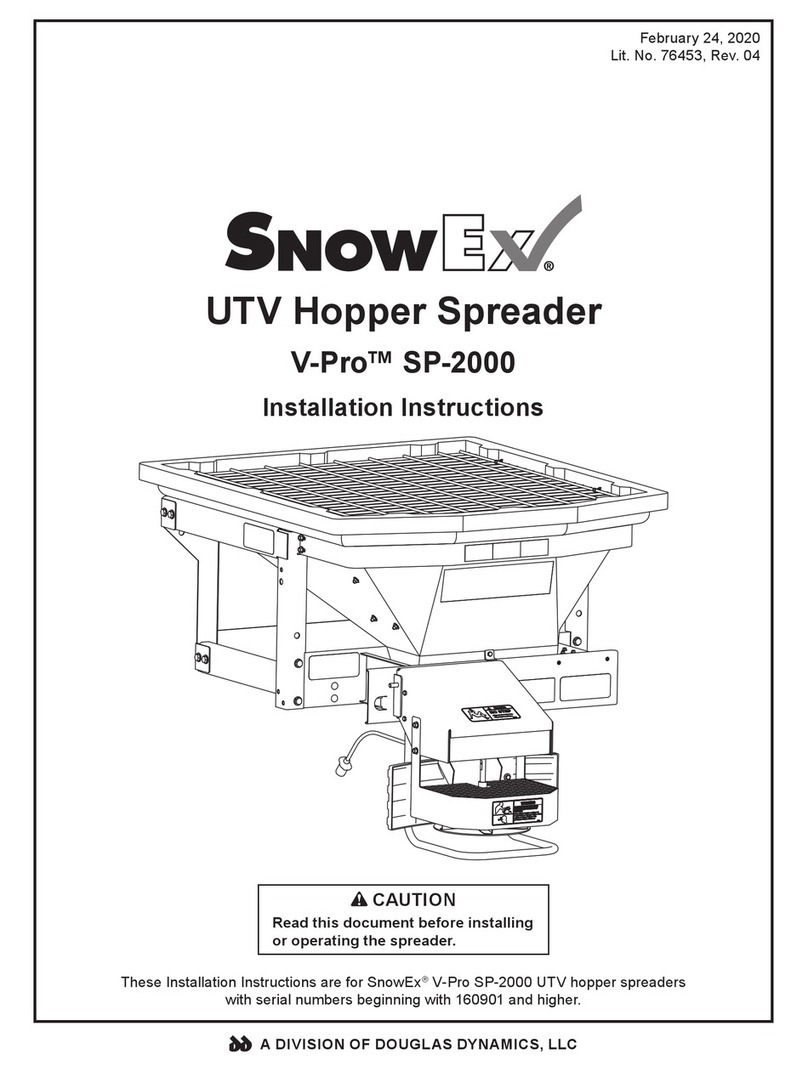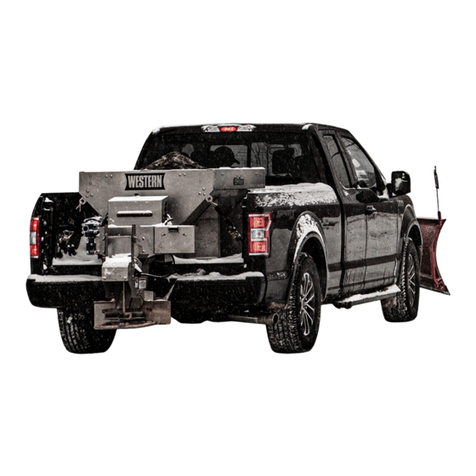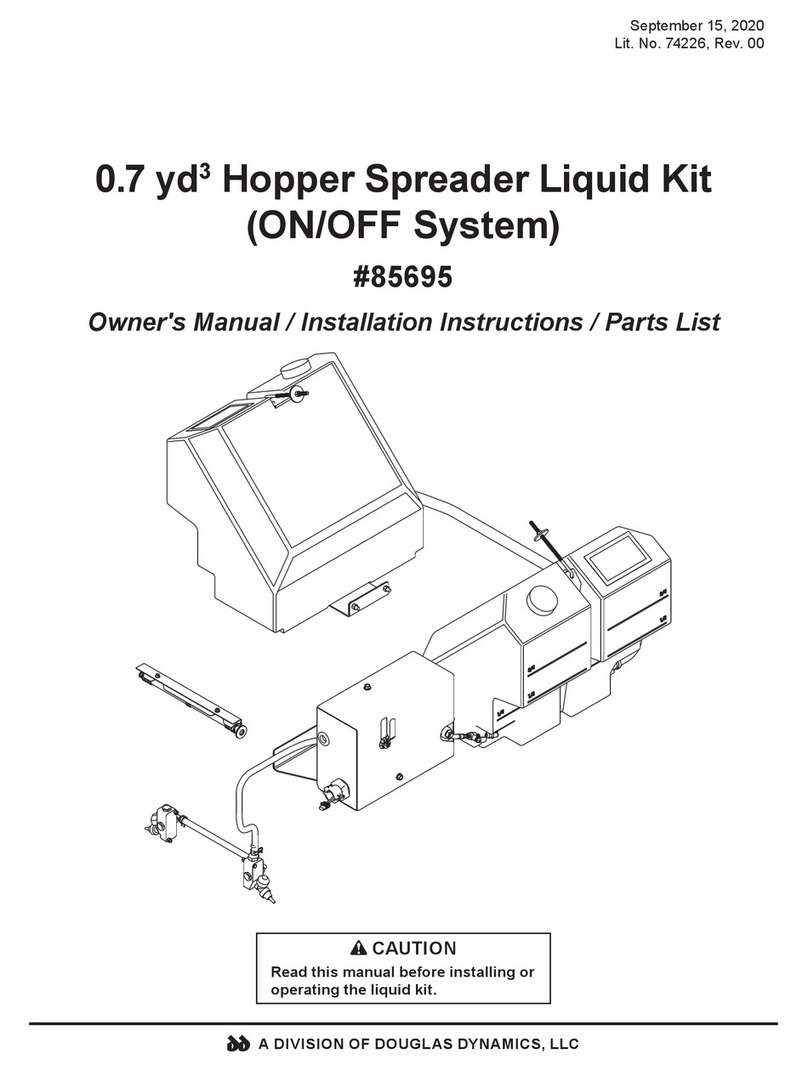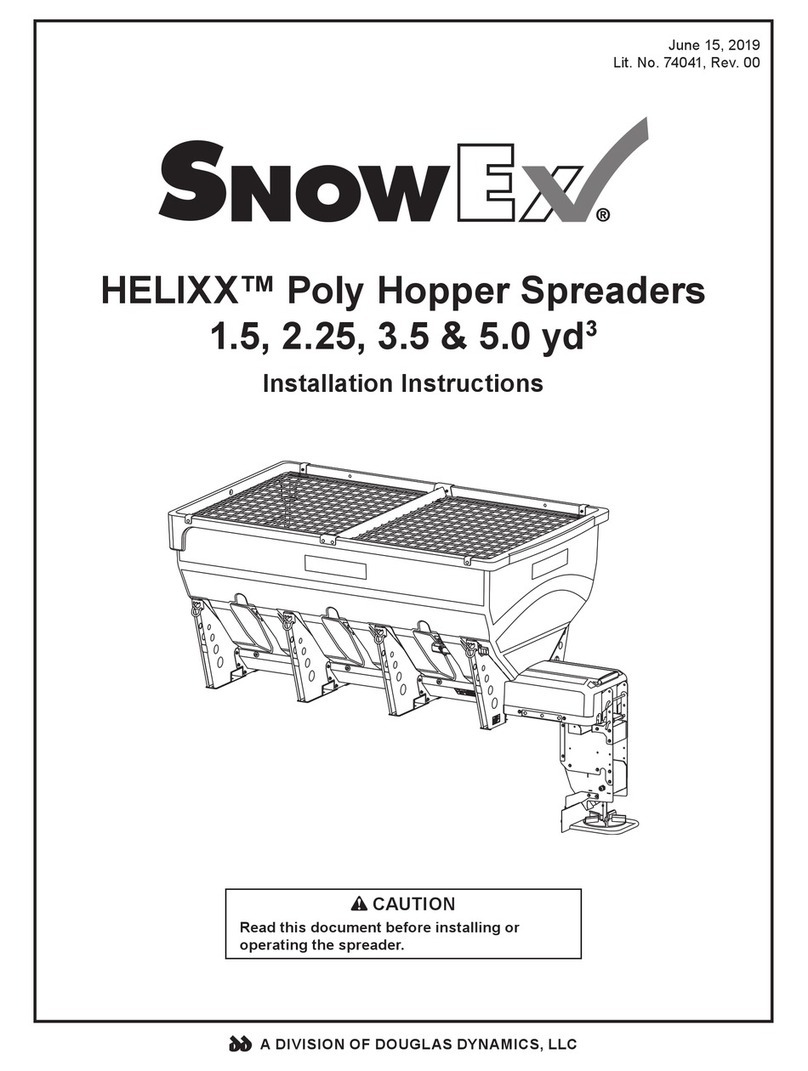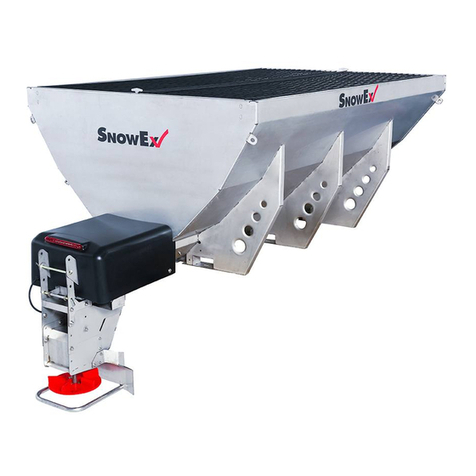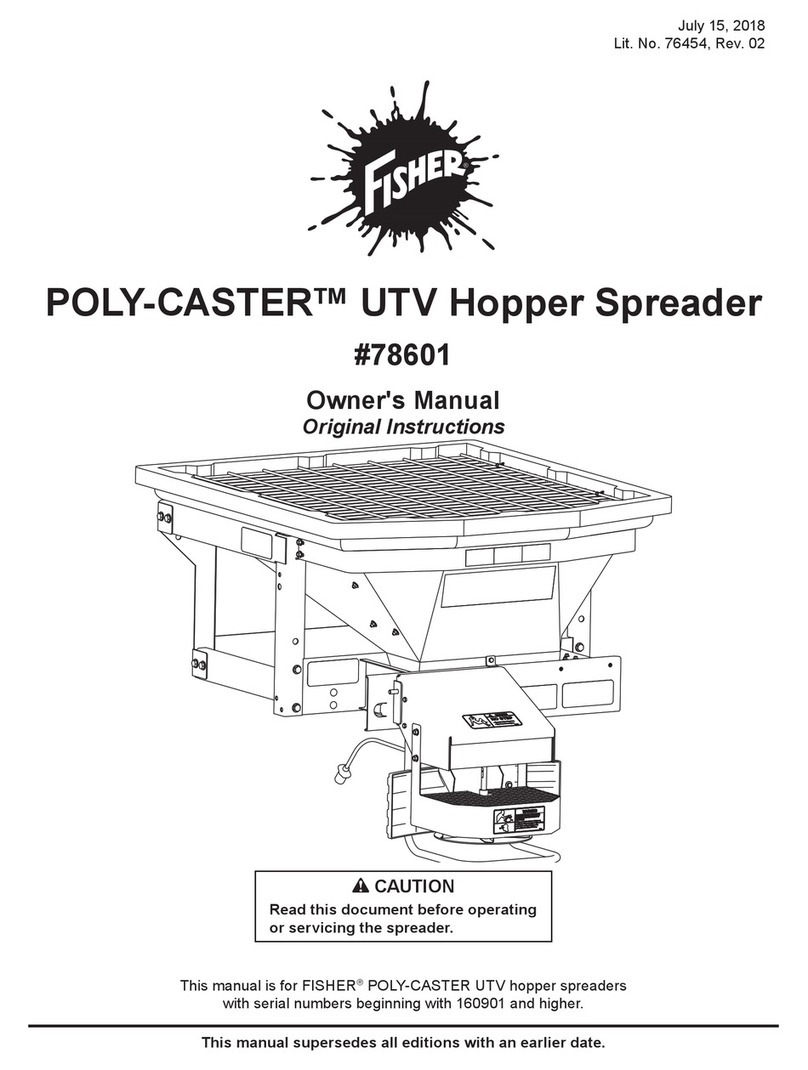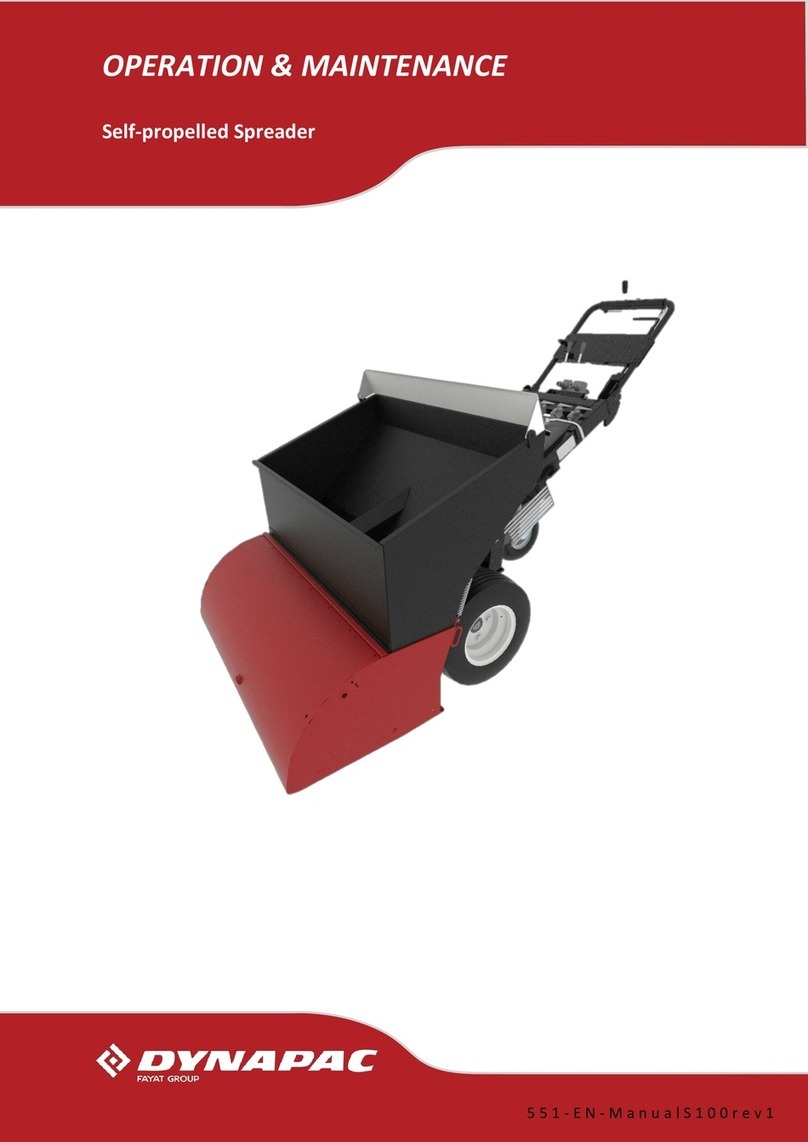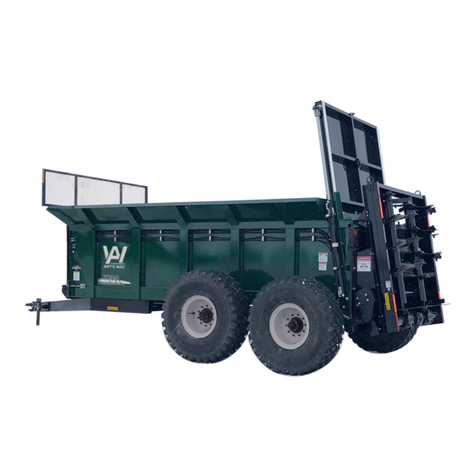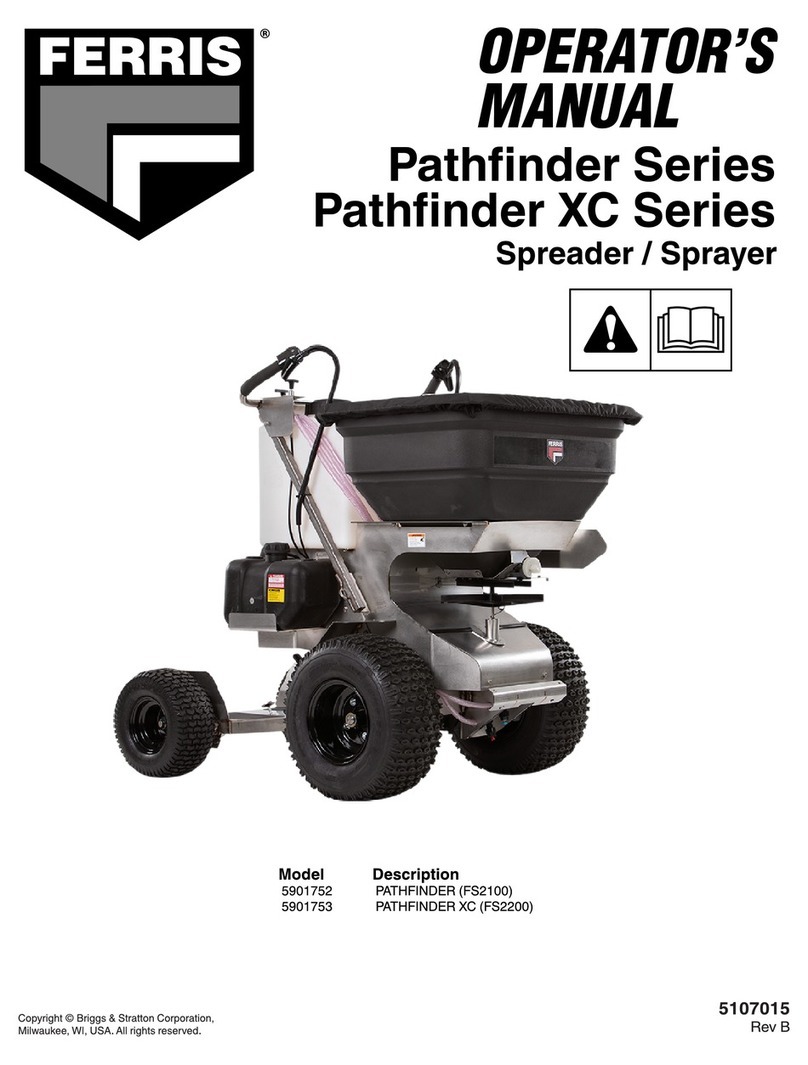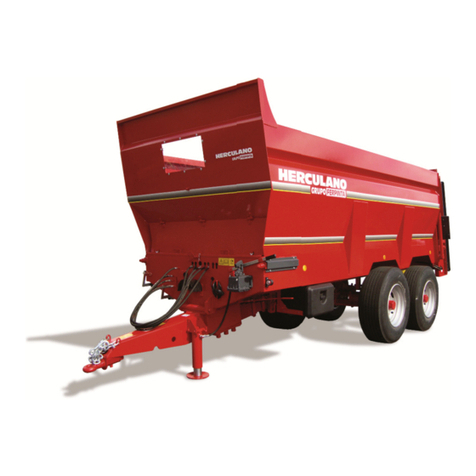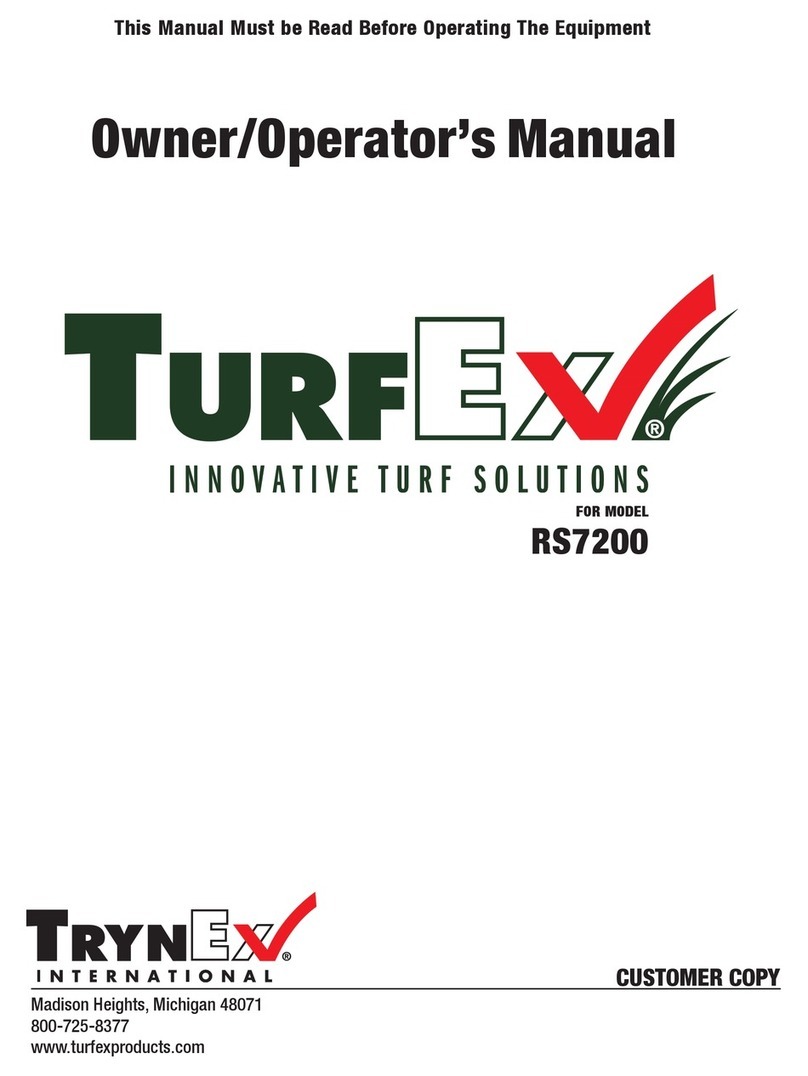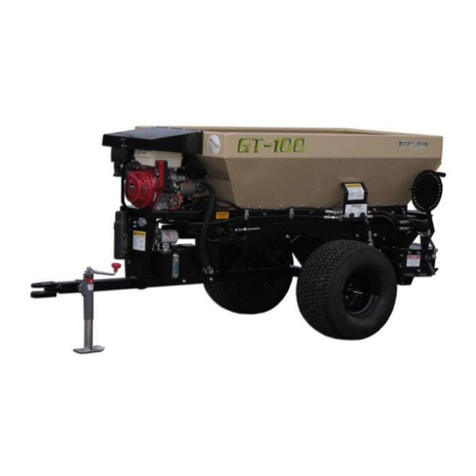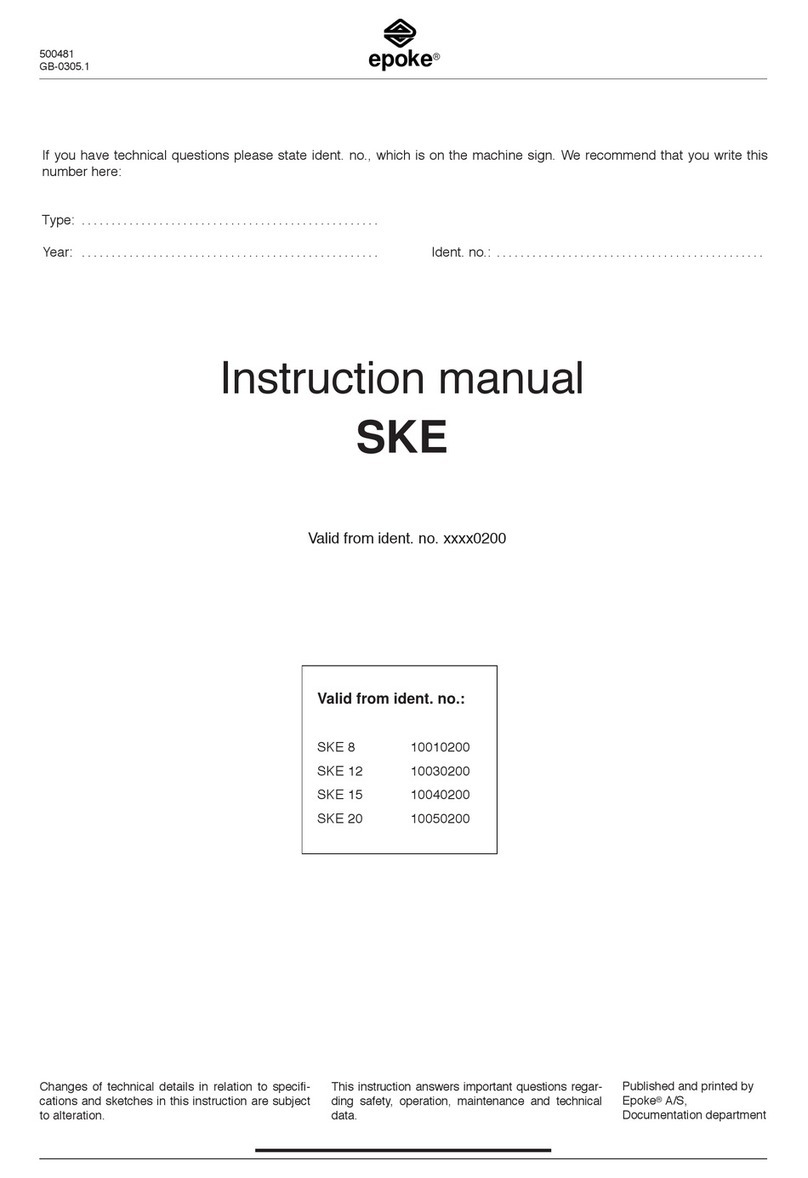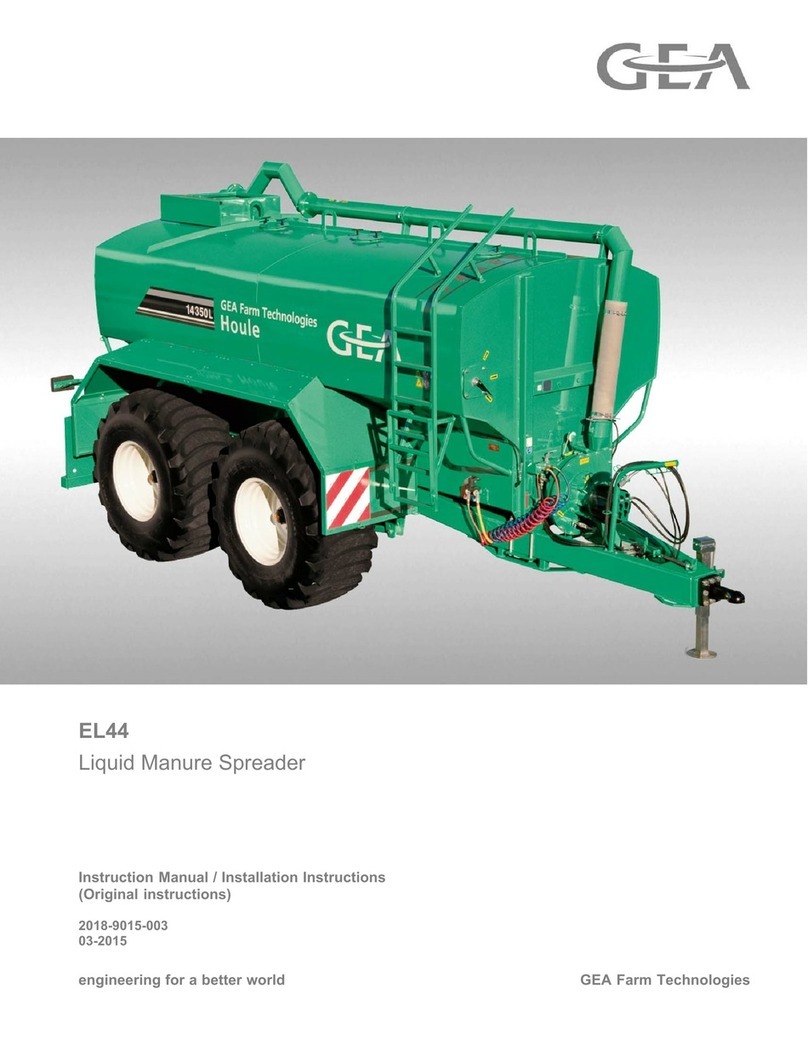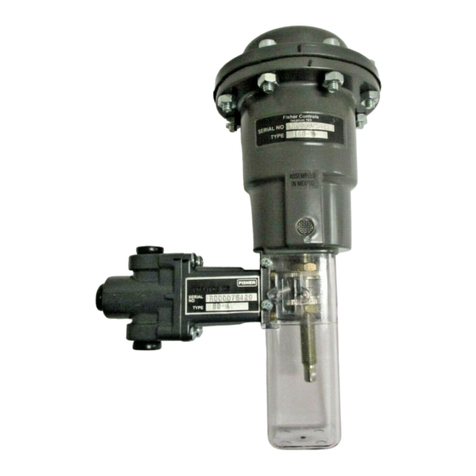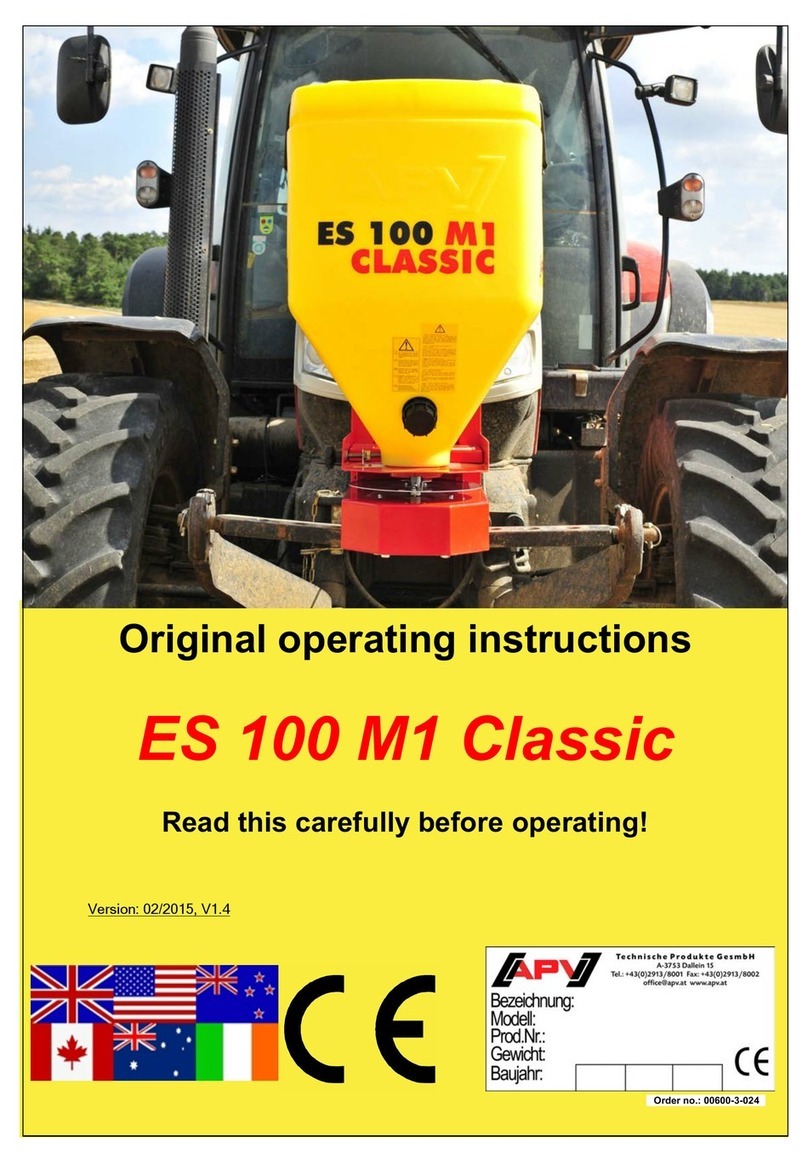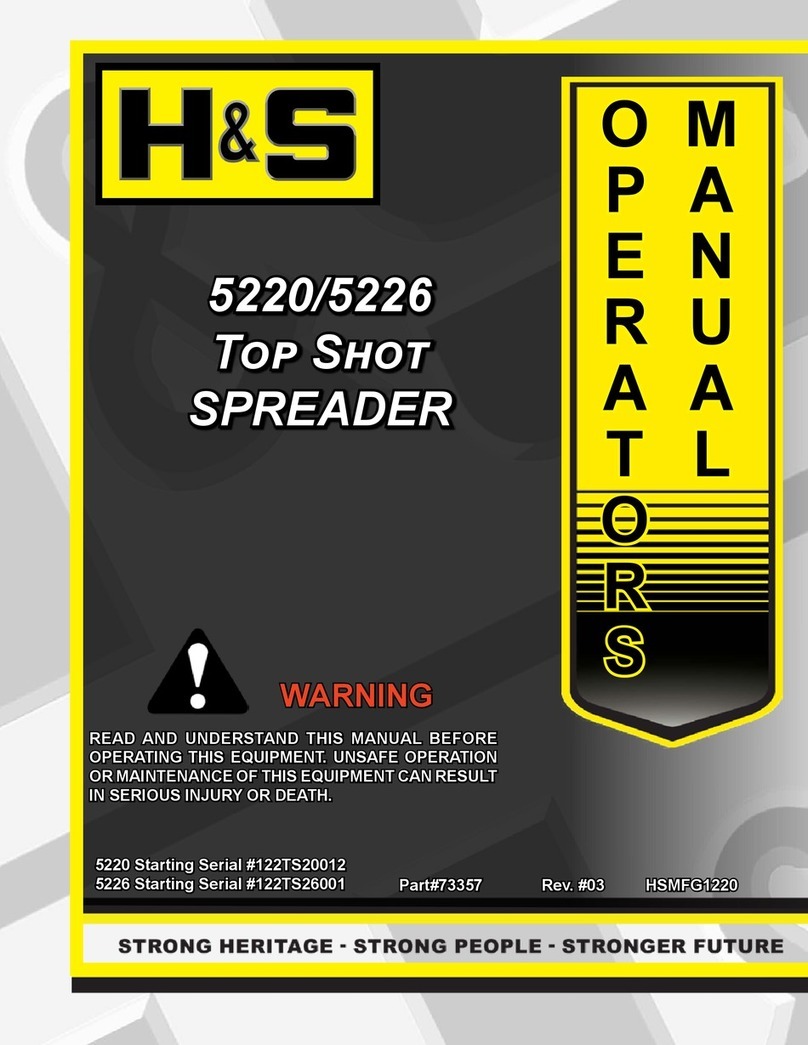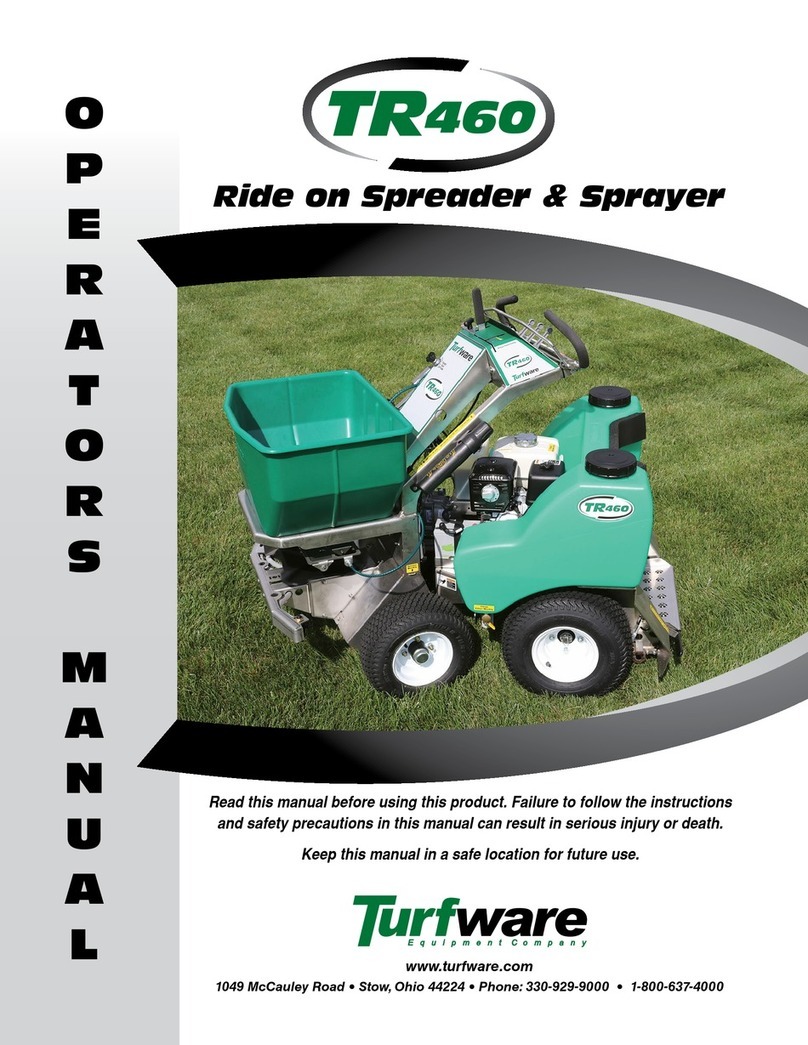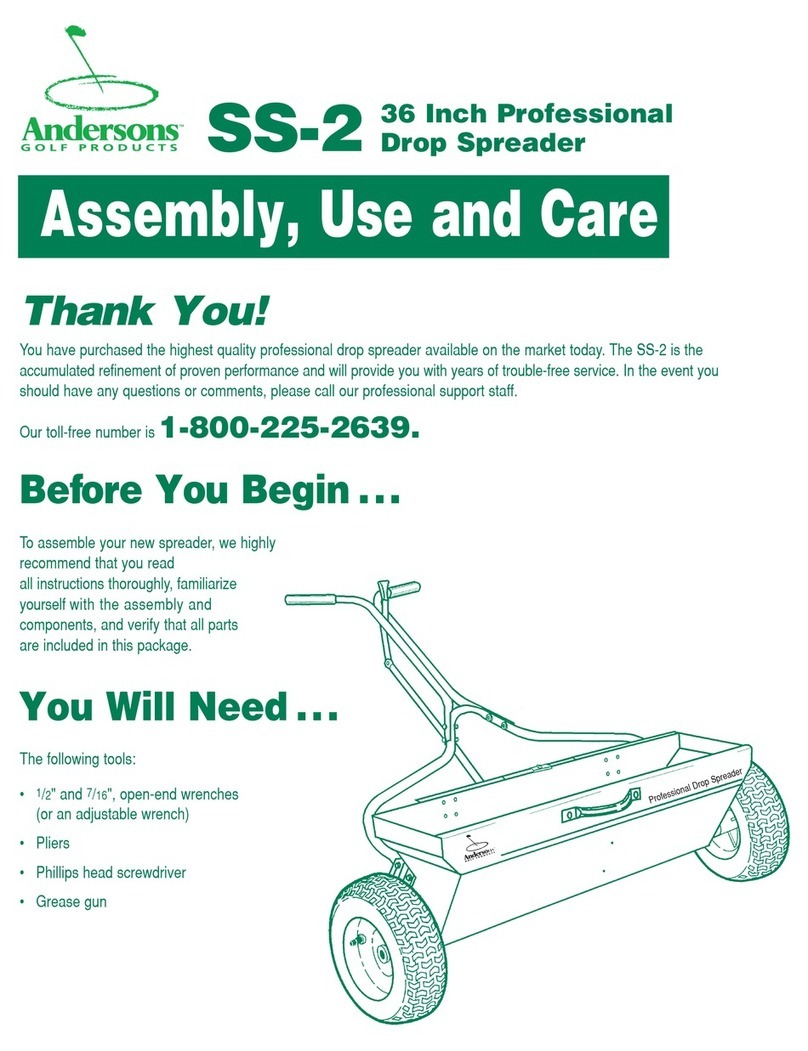
Lit. No. 74171, Rev. 00 5 September 15, 2020
SAFETY
SAFETY PRECAUTIONS
Improper installation and operation could cause
personal injury and/or equipment and property
damage. Read and understand labels and the
Owner's Manual before installing, operating, or making
adjustments.
WARNING
• Driver to keep bystanders a minimum of
25 feet away from operating liquid system.
• Before working with the liquid system,
secure all loose-fitting clothing and
unrestrained hair.
• Before operating the liquid system, verify
that all safety guards are in place.
• Before servicing the liquid system, wait for
conveyor and spinner to stop.
• Do not climb into or ride on liquid system.
WARNING
• The drive shafts, conveyor, and spinner
assemblies transmit great amounts of
power and, accordingly, are hazardous
when in operation. All maintenance,
inspections, or operator adjustments must
be made with all source power OFF.
• Keep liquid system and surrounding area
clear of personnel and property when
operating.
• When traveling, especially fully loaded, this
machine may have a high center of gravity,
and care should be exercised when turning
or driving on banked surfaces.
• Unauthorized modifications to the liquid
system and related components may impair
the function and/or safety.
CAUTION
• Do not operate a liquid system in need of
maintenance.
• Before operating the liquid system,
reassemble any parts or hardware removed
for cleaning or adjusting.
• Before operating the liquid system, remove
materials such as cleaning rags, brushes,
and hand tools from the liquid system.
• While operating the liquid system, use
auxiliary warning lights, except when
prohibited by law.
• Tighten all fasteners according to the
torque chart. Refer to torque chart for the
recommended torque values.
CAUTION
Disconnect electric and/or hydraulic power
and tag out if required before servicing or
performing maintenance.
PERSONAL SAFETY
• Remove the ignition key and put the vehicle in
PARK or in gear to prevent others from starting
the vehicle during installation or service.
• Wear only snug-fitting clothing while working on
your vehicle or liquid system.
• Do not wear jewelry or a necktie, and secure long
hair.
• Wear safety goggles to protect your eyes from
battery acid, gasoline, dirt, dust, and brine.
• Avoid touching hot surfaces such as the engine,
radiator, hoses, and exhaust pipes.
• Always have a fire extinguisher rated BC handy,
for flammable liquids and electrical fires.
CAUTION
DO NOT leave unused material in hopper.
Material can freeze or solidify, causing unit to
not work properly. Empty and clean after each
use.
WARNING
Overloading could result in an accident or
damage. Do not exceed GVWR or GAWR
ratings as found on the driver-side door
cornerpost of the vehicle. See Loading
section of your spreader Owner's Manual to
determine maximum volumes of spreading
material.
